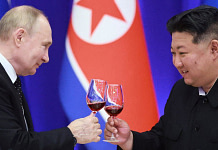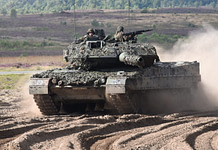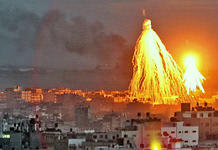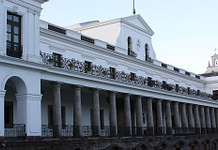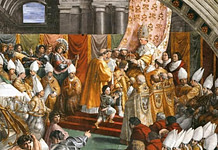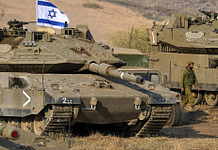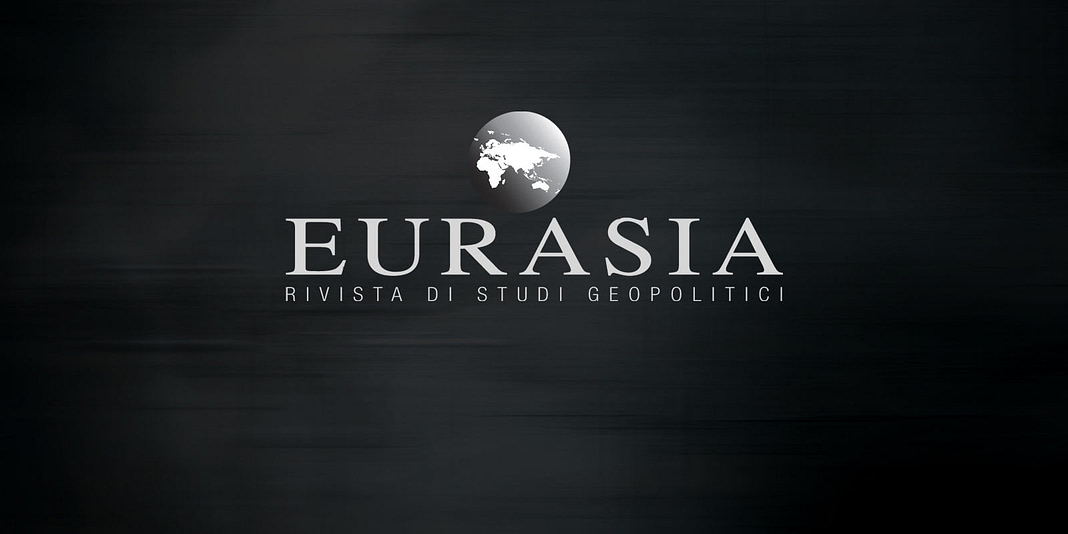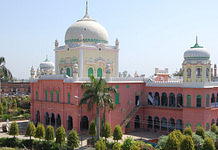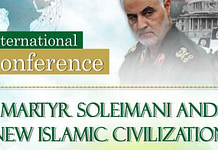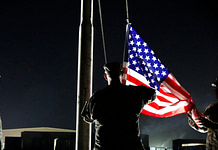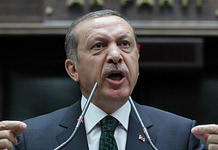The year which just ended was undoubtedly plenty of successes for the Kremlin. In spite of a rather low economic growth, Russia can still present itself as an island of development in the sea of the European stagnation. Moreover, after almost two decades of negative rates, the country’s natural population change is expected to be slightly positive in 2013[1]. But the most important victories have been achieved in the foreign policy. In September 2013, Putin made Obama accept a compromise over the Syrian issue, and so prevented an American attack that seemed almost certain. Meanwhile, Armenia’s government decided to apply for membership of the Eurasian Customs Union (ECU). In the end of October, the Georgian President Mikheil Saakashvili, a staunch pro-Western and anti-Russian politician, was replaced by the more conciliatory Giorgi Margvelashvili, elected with about 63% of the votes[2]. And, last but not least, on 21st November the Ukrainian Prime Minister Mykola Azarov decided to abandon its goal to sign the Association Agreement with the European Union (EU), which would have established a free-trade area (FTA) between Ukraine and the EU, in order to strengthen its relations with Russia and the CIS states. But, while Europe and America were – fruitlessly – doing their best in trying to persuade Ukraine to reverse its decision, Kyrgyzstan, a poor but strategically important Central Asian republic, refused to sign the Adhesion Agreement to the Eurasian Customs Union[3]. The balance sheet, nevertheless, remains neatly positive.
Ukraine is still unlikely to join the ECU in the near future, as desired by Putin, but the perspective of this happening after the 2015 presidential elections is not unlikely. In spite of the massive pressures exerted by both the Euromaidan protests and the European and American leaders, the Ukrainian President Viktor Yanukovich seems to be rather determined to stand on his decision. Longing for lower gas prices and help for his country, which is on the verge of failure, and after being offered very strict conditions by both the EU and the International Monetary Fund (IMF), Ukraine turned towards Russia. Informal talks between Yanukovich and Putin were intensive throughout the crisis, and, on 17th December 2013, the latter reduced the gas export prices from $400 to $268.5 per thousand cube metre. Moreover, Russia bought $15 billion dollars of Ukrainian government bonds through the Russian National Wealth Fund. And, at least officially, these helps came without any precondition, let alone ECU membership[4].
This is undoubtedly a sign of Putin’s pragmatism. During the crisis, indeed, the Russian President has generally refrained from putting ultimatums or forcing Kiev into the ECU; on the contrary, he stated that Ukraine might be allowed to keep tight trading links with Russia even if it would decide to join a free trade zone with the European Union[5]. Moreover, when Ukraine’s government decided to part with the Association Agreement (whose signing, nevertheless, was far from certain, as the EU required some political and economic reforms as a precondition), Putin was even able to present himself as a guarantor of Ukraine’s independence. During a meeting with the Italian Prime Minister Enrico Letta, for instance, the Russian President stated that “the choice of whom to sign a free trade agreement with is Ukraine’s sovereign choice and we will respect its decision, whatever it is”, and urged the European leaders to stop using “sharp words” on Ukraine[6]. Putin knows very well that putting ECU membership as a precondition for any help would only distance Kiev and increase Western criticism on the Russian foreign policy. What is important for him, now, is that Ukraine’s economy somehow recovers (and the benefits of the recent Russian bailout are already evident, as shown by the stabilization of the Hryvnia exchange rate[7]), Yanukovich comes back to power in 2015, the West accepts the role of Russia in the region, and the pro-European protests end.
If not over, the protest wave which has been investing several Ukrainian regions, mainly in the West and the Centre, is far weakened compared to some weeks ago. On 5th January 2014, indeed, only 5,000 people joined the protests in the Independence Square of Kiev[8], and the last demonstrations came almost unnoticed in the international press. This is striking when one thinks that, on 8th December 2013, the protesters were – at least according to the organizers’ estimates – half a million[9]. And Yanukovich, who so far has refrained from a massive use of force against protesters, is now assuming a stauncher position: on 30th December, for instance, he signed a law introducing the crime of “illegal occupation of public buildings” (the Kiev City Hall and other public structures are still held by the protesters)[10]. But now the Kievan population itself, in spite of its pro-European attitude, seems rather tired of the diseases the protests have been provoking, and in the last weeks there have been several charges against some misdemeanours of the protesters[11].
While Ukraine seemed to be on the brink of a second Orange Revolution, Armenia was rapidly proceeding towards the integration with Eurasia. On 24th December, the road map for the Armenian adhesion to the ECU was approved, and, during his message for the New Year’s Day, the Armenian President Serzh Sargsyan stated that his country is likely to join the ECU in 2014. Furthermore, like Ukraine, Armenia is enjoying the benefits of a steady improvement of its relations with Russia: during his last visit to Yerevan, Putin reduced the prices for the gas exportation to the country from $270 to $189 per thousand cube meter, and mentioned the possibility to apply the Russian prices for the sales of weapons to Armenia[12]. In return, Armenia agreed to sell 20% of Armrosgazprom, the Russian-Armenian joint venture for gas, to Gazprom, which already owned 80% of the company; this, nevertheless, sparked some protests from the opposition[13].
Some other protests, more vocal, came from Azerbaijan, whose authorities stated that “Armenia’s adhesion to the ECU, or to any similar international organization, will be possible only after the liberation of the occupied Azerbaijani lands”[14]. The main fear is an informal – or even official – recognition of the self-proclaimed Republic of Nagorno-Karabakh, established with Armenia’s support. The issue was raised also by the Kazakhstani President Nursultan Nazarbayev, who, during the discussions for the road map for the Armenian adhesion, stated that the latter would arise the issue of the external borders of the Customs Union. The document, nevertheless, was issued without any reference to the Karabakh issue, and an Armenian politician went as far as stating that Nagorno-Karabakh will actually become a member of the ECU[15]. But for Nagorno-Karabakh and the lack of both direct borders with the Union and sea mergers, there seem to be no particular problems in the Armenian adhesion to the Customs Union: at the end of the meeting for the road map, Nazarbayev himself stated that Armenia is far more ready to adhere to the ECU than Kyrgyzstan[16].
Among the candidates to the ECU membership, Kyrgyzstan seems to be one of the less desired. The reasons for this are manifold: Kyrgyzstan is a the second poorest country in the Former Soviet Union after Tajikistan, its borders, especially the southern ones, are scantly controlled and often serve as a transit point for drug and weapon traffic, and its southern regions are rather unstable because of the spread of Wahhabism and the recurring interethnic clashes between Kyrgyzes and Uzbeks. The need for a strong ally and the desire not to be swallowed by instability or by the steadily increasing Chinese influence are undoubtedly two major factors influencing the Kyrgyzstani President Almazbek Atambayev’s staunch determination to join the ECU.
Kyrgyzstan requested officially to join the Customs Union in 2011[17], and in April 2013 Atambayev stated that his country is likely to become the fourth ECU member state by the end of the year[18]. Everything seemed to go rather straightforwardly. In June, the Kyrgyz government decided not to renew the contract with the USA for the use of the Manas Air Base, near the Kyrgyz capital Bishkek. The base will be closed on 11th June 2014[19]. Meanwhile, Russia will enhance its air base of Kant, still near Bishkek[20], and build a new military facility on the Lake Issyk-Kul[21]. A month later, Kyrgyzgaz, the Kyrgyzstani national gas company, was sold to Gazprom for the symbolic price of one dollar. This deal, nevertheless, has actually been a real bargain for Kyrgyzstan: Gazprom, indeed, pledged to undertake investments and modernization works for $670 million, as well as to pay off Kyrgyzgaz’s debts (38 million dollars). Furthermore, the Russian national gas giant will own Kyrgyzgaz for only 25 years, after which the company will come back to the Kyrgyzstani government if the deal will not be renewed[22].
Nevertheless, there was – and is – a number of unresolved issues which would have led to Atambayev’s final decision not to sign the Adhesion Agreement to the Customs Union. One of these is about compensation duties. As a WTO member state, indeed, Kyrgyzstan would have to pay compensations to several nations after joining the ECU and aligning its duties with those of the Union. The Central Asian Republic demanded so to maintain its own duties over around 2,600 products as a temporary measure. Kyrgyzstan, furthermore, required $415 million to support the economic development of the country and improve the security of its outer borders, a provision for the free circulation in the territory of the Union for its migrants, and a deferral of the liberalization of the trade in the Dordoy and Kara-Suu bazaars. None of these conditions, nevertheless, was put into the Adhesion Agreement issued in November, and Nazarbayev stated that “there will be no adhesions to the ECU at special conditions”. Bishkek, in turn refused to sign the agreement, but its Deputy Prime Minister Dzhoomart Otorbayev declined the idea of Kazakhstan and Russia having given “an ultimatum” to the Kyrgyz Republic and stated his willingness to start new consultations with the Eurasian trio in order to sign the Adhesion Agreement in May[23].
Is Kyrgyzstan an undesired guest in the ECU? The country interests mainly for its geographical position and to stabilize the region (or, at least, to prevent its further destabilization). The Americans’ departure from Manas and their future retire from Afghanistan will make Central Asia completely free from the US military presence. Russia and China will remain the main pretenders for the geopolitical control of Central Asia, with the former being relatively advantaged over the latter. But, on the other hand, the risks connected to the growth of Islamic fundamentalism will inevitably increase, and the most vulnerable states are undoubtedly Kyrgyzstan and Tajikistan. The causes for this are manifold. Apart from the traditional religious conservatism of certain regions, such as the Fergana Valley[24], much is due to the widespread poverty and unemployment. Unfortunately, this is not something new. In the Batken province of south-western Kyrgyzstan, for instance, the Islamic Movement of Uzbekistan (IMU) paid each guerrilla monthly salaries between $100 and $500; and, if we consider that, in the late 90’s, unemployment rates swung around 60–80 percent, it should not be surprising if many found these salaries particularly attractive[25]. The question of Islamic fundamentalism in Kyrgyzstan is of interest for all the Former Soviet Union countries, and Yeltsin’s claim that “the border between Afghanistan and Tajikistan is actually a Russian border” is all but outdated[26].
There is no doubt that economic and social development will contrive to limit, or even reverse, the spread of fundamentalism, and many agree that Kyrgyzstan would greatly benefit from the Union. One of them is Atambayev, who stated that the Kyrgyzstani textile industry has the potential to become leader in the CIS once the country will have joined the ECU[27]. Such claims are supported also by the Kazakhstani economist Sergey Akimov, who forecasts an overall steady growth of the Kyrgyzstani manufacture[28], but someone else, like the Kazakhstani political analyst Sanat Kushkumbayev, stated that the role of underground economy in the country puts into question the presence of overall benefits for Kyrgyzstan from the ECU membership[29]. And a number of experts and entrepreneurs, especially in nearby Kazakhstan, is worried by the repercussions on security after Kyrgyzstan’s adhesion to the Union on both security and increased concurrence. According to Zhomart Aldangarov, leader of the Eurasian Entrepreneurs’ Association, it will be difficult for the Kazakhstani small and medium enterprises (SME) to compete to the Kyrgyzstani one, whose production costs are far lower[30].
It is noteworthy that many Kazakhstani opponents to Kyrgyzstan’s adhesion to the ECU seem to agree on the fact that the latter would not only stimulate the economic development of the country, but also enhance its internal security. This, in turn, leads to question the overall foundations of the Customs Union. Could the ECU be an effective instrument to ensure Eurasia peace, economic development and stability in the long term, or is it simply a tool for realizing short-term benefits, lacking any vision? The principle of mutual solidarity among the member states should be one of the bases of the Customs Union, as well as of any economic union aiming to fulfil long-term ends. But, if supporting Kyrgyzstan is a both material and moral need for all the ECU member states – Russia, for example, is now financing the building of a hydroelectric power plant –, there is a clear risk that the country would become excessively reliant on foreign aid, or even that the aids would rather contrive to strengthen power and corruption nets. And this, according to an important Kazakhstani entrepreneur, is already happening in Kyrgyzstan because of the ongoing instability and the recurring revolutions[31].
[1] http://www.forbes.com/sites/markadomanis/2013/10/24/11-things-everyone-should-know-about-russian-demography/
[5] http://www.csmonitor.com/World/2013/1212/Putin-to-Ukraine-the-door-s-still-open-to-a-trade-pact-video
[8] http://www.kyivpost.com/multimedia/photo/as-orthodox-holidays-approach-protests-continue-in-kyiv-334686.html
[10] http://rus.ruvr.ru/news/2013_12_30/Zahvat-zdanij-i-organizacij-na-Ukraine-budet-karatsja-pjatju-godami-tjurmi-0575/
[11] http://rus.ruvr.ru/news/2014_01_01/MVD-Kievljane-ezhednevno-zhalujutsja-v-miliciju-na-uchastnikov-evromajdana-1577/
[16] http://tengrinews.kz/sng/prezident-kazahstana-rasskazal-problemah-prisoedinenii-kyirgyizstana-armenii-ts-247745/
[19] http://tengrinews.kz/sng/atambaev-podpisal-zakon-o-vyivode-aviabazyi-ssha-iz-kyirgyizstana-236946/
[21] http://tengrinews.kz/sng/za-voennuyu-bazu-v-kyirgyizstane-rossiya-budet-platit-45-milliona-dollarov-v-god-230560/
[22] http://www.gezitter.org/economics/26479_jumakadyir_akeneev_prezident_assotsiatsii_neftetreyderov_kyirgyizstana_kyirgyizgaz_otsenen_ne_v_odin_a_v_700_millionov_dollarov/
[23] http://www.vb.kg/doc/256449_otorbaev:_kr_nadeetsia_podpisat_dorojnyu_karty_vstypleniia_v_ts_v_mae.html
[24] The Fergana Valley is a Central Asian region located between Kyrgyzstan, Tajikistan and Uzbekistan.
[25] D. Hiro, Inside Central Asia, Overlook Duckworth, New York/London 2011, p. 298.
[26] S.P. Huntington, Lo Scontro delle Civiltà e il Nuovo Ordine Mondiale, Garzanti, Milan 2000, p. 403.
Questo articolo è coperto da ©Copyright, per cui ne è vietata la riproduzione parziale o integrale. Per maggiori informazioni sull'informativa in relazione al diritto d'autore del sito visita Questa pagina.


